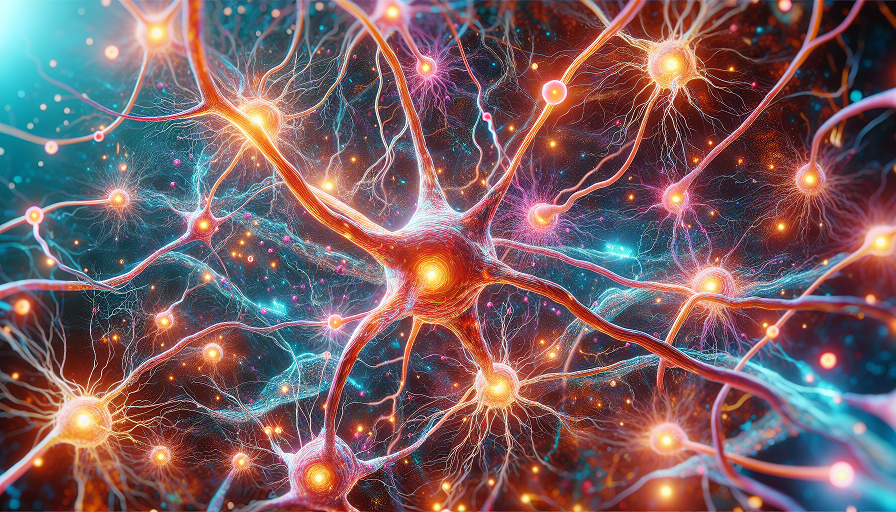
Short answer: Possibly, and modestly. Switching the brain’s fuel mix from glucose toward ketone bodies (β-hydroxybutyrate and acetoacetate) can change neuronal excitability and network dynamics. Small human studies using fMRI and EEG report shifts in resting-state connectivity and more stable neural signaling under ketosis, but effects vary and often blur with confounders like weight loss, sleep changes, and altered caffeine intake.
Contents
Why Fuel Choice Could Reshape Networks
- Metabolic efficiency: Ketone oxidation yields more ATP per unit oxygen than glucose, which may stabilize activity in energy-hungry hubs (default-mode and frontoparietal networks) under metabolic stress.
- Neurotransmitter balance: Ketosis tends to increase GABA relative to glutamate and raises adenosine tone – both dampen cortical hyperexcitability and can change oscillatory patterns measured by EEG.
- Inflammation & oxidative stress: β-hydroxybutyrate acts as a signaling molecule (e.g., inhibiting certain inflammasome pathways and some histone deacetylases), which may support synaptic plasticity and glial function.
- Insulin sensitivity & blood sugar variability: Flatter glucose swings can reduce noradrenergic “noise” and improve the signal-to-noise ratio in attention networks.
What Imaging Studies Generally Show
Across pilot trials and crossover experiments, researchers have observed subtle changes such as:
- Altered resting-state connectivity within the default-mode network (DMN) and between DMN and executive control regions.
- Improved network “stability” or reduced moment-to-moment variability in BOLD signals during ketosis or after exogenous ketone intake.
- Shifts toward lower-frequency EEG power with reduced high-beta activity in some tasks (consistent with slightly calmer cortical tone).
Interpret cautiously: samples are small, protocols differ (strict diet vs. MCT oil vs. ketone esters), and effects often co-occur with weight loss, better sleep, or diet cleanup (fewer refined carbs) – all of which can independently influence connectivity.
Who Might Notice the Most Change?
- Insulin resistance or type 2 diabetes: Stabilizing glucose and reducing neuroinflammation may improve network efficiency.
- Mild cognitive complaints or aging: Some studies report better memory and attention when ketone availability rises, especially in individuals with impaired glucose metabolism.
- Neurological conditions: In epilepsy, ketogenic diets clearly alter excitability; adults without epilepsy may still experience calmer neural dynamics, though cognitive benefits are variable.
Practical, Science-Guided Approach
- Decide your modality: Options include a strict ketogenic diet (e.g., <30–50 g net carbs/day), a moderate-carb diet plus targeted MCT oil to raise ketones mildly, or occasional exogenous ketones. Strictness is not mandatory for every benefit.
- Ramp gradually: Over 1–2 weeks, lower refined carbs, keep protein adequate (≈1.2–1.6 g/kg/day), and add non-starchy vegetables for potassium and magnesium.
- Electrolytes matter: During adaptation, increase sodium (e.g., broth), potassium (leafy greens, avocado), and magnesium to prevent “keto-flu” headaches and fatigue that can masquerade as cognitive decline.
- Time your work: Many feel clearest mid-morning when ketones are present but before large meals. Track subjective focus (1–5) and task initiation for two weeks; adjust carbs around cognitively heavy days if needed.
- Layer exercise and sleep: Aerobic exercise reliably boosts BDNF and network integrity; pair with consistent sleep schedules to separate diet effects from recovery effects.
Confounders and Limits
- Calorie deficit: Weight loss itself improves sleep apnea, inflammation, and insulin sensitivity – each changes connectivity. If you want to isolate ketosis, hold calories steady initially.
- Caffeine and light exposure: Cutting soda/coffee or changing morning light can shift arousal and resting-state metrics regardless of diet.
- Short-term vs. long-term: Early weeks bring fluid shifts and electrolyte changes; brain effects seen then may differ from steady-state ketosis at 8–12 weeks.
- Heterogeneity: Genetics, microbiome, and baseline diet shape response. Expect variability.
Risks and Who Should Be Cautious
- History of kidney stones, gout, pancreatitis, or significant liver disease.
- Pregnancy, eating disorders, or underweight status.
- Hyperlipidemia: some individuals see LDL-C/apoB rises on high-saturated-fat keto. Favor unsaturated fats (olive oil, nuts, fish) and monitor labs.
- Thyroid and menstrual function: very low carbs can affect some individuals; watch energy, mood, cycles, and adjust.
Bottom Line
Ketogenic strategies can nudge adult brain connectivity and signal stability, but effects are modest and entangled with other lifestyle shifts. For cognitively healthy adults, think of ketosis as a tool – not a requirement – for mental clarity. Keep protein adequate, prioritize sleep and exercise, manage electrolytes, and evaluate personally with simple tracking rather than expecting dramatic network rewiring.

